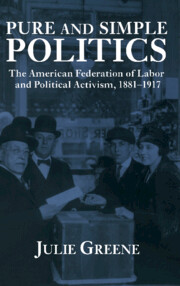8 - The Making of Labor's Democracy
Published online by Cambridge University Press: 31 August 2009
Summary
After 1912, a growing consensus that the government must do more to correct the evils of industrial capitalism took hold through much of the United States, helping to recast political relationships and strategies along the way. Woodrow Wilson had won the presidency in 1912 by articulating a vision of only very modest state action. Poised between Theodore Roosevelt, who advocated a more interventionist state, and William Taft, who celebrated the virtues of laissez-faire relationships and viewed the government's role negatively, Wilson took the middle road. More government was needed, he seemed to say, but not much more. When campaigning among workers that year, Wilson sounded remarkably like Samuel Gompers, warning that a powerful government could turn virtuous workingmen into dependent wards of the state.
Once elected, Wilson found his vision difficult to implement because numerous pressures encouraged him to use his power in more positive ways. Both the Progressive and Socialist movements enjoyed great vitality during these years, and activists from both movements clamored for expanded governmental responsibilities, demanding everything from free schoolbooks for children, to pensions for mothers, to laws regulating child or female labor. Wilson's own actions, and especially his role in forming the Commission on Industrial Relations in 1913, helped focus public attention on the government. Organized labor continued fighting to win anti-injunction legislation and exemption from the Sherman Anti-Trust Act.
- Type
- Chapter
- Information
- Pure and Simple PoliticsThe American Federation of Labor and Political Activism, 1881–1917, pp. 242 - 273Publisher: Cambridge University PressPrint publication year: 1998



